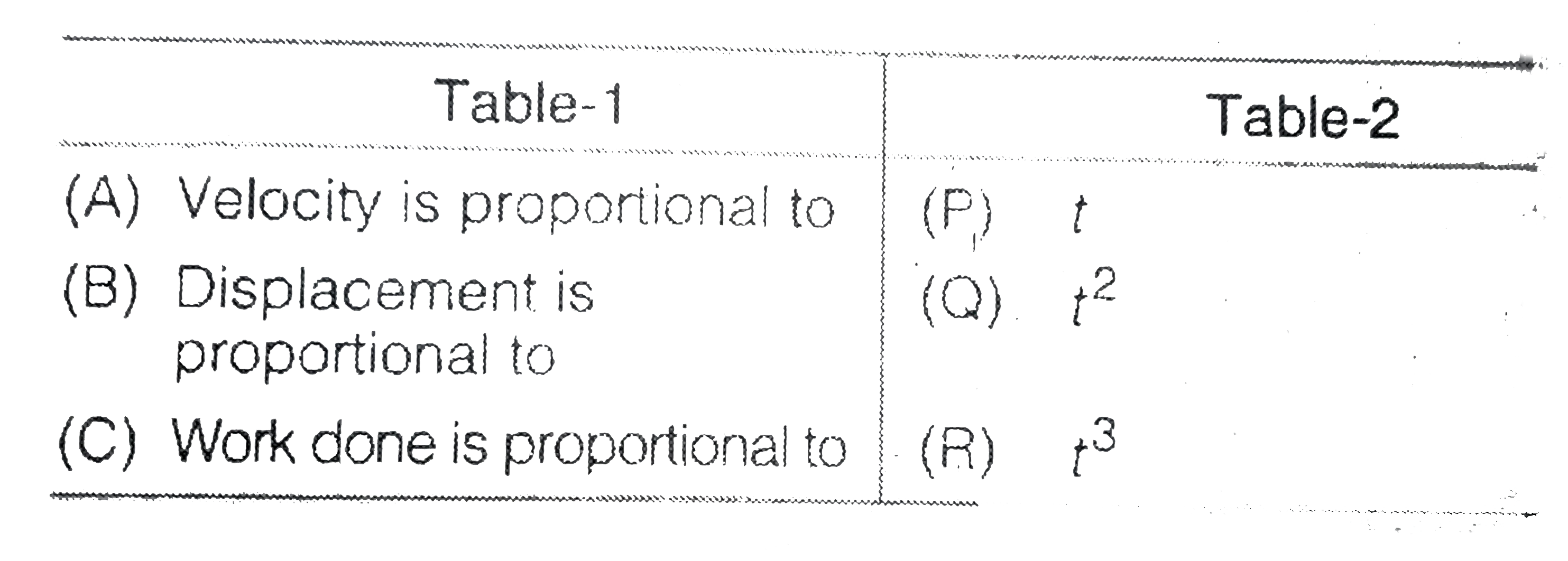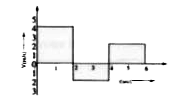A body is moved along a straight line by a machine delivering constant power . The distance moved by the body is time t is proptional to
t1/2
t3/4
t3/2
t2
The correct Answer is:C
To solve the problem of how the distance moved by a body is related to time when a machine delivers constant power, we can follow these steps:
1. Understand the relationship between power, force, and velocity:
The power P delivered by the machine can be expressed as:
P=F⋅V
where F is the force applied and V is the velocity of the body.
2. Express velocity in terms of distance and time:
The velocity V can be defined as:
V=St
where S is the distance traveled and t is the time taken.
3. Express force in terms of mass and acceleration:
The force F can also be expressed using Newton's second law:
F=m⋅a
where m is the mass of the body and a is the acceleration.
4. Relate acceleration to distance and time:
The acceleration a can be expressed as:
a=Vt=S/tt=St2
5. Substitute these expressions into the power equation:
Substituting F and V into the power equation gives:
P=(m⋅a)⋅V=m⋅(St2)⋅(St)
Simplifying this, we have:
P=m⋅S2t3
6. Rearranging the equation:
From the equation above, we can rearrange it to find S2:
S2=P⋅t3m
7. Taking the square root:
Taking the square root of both sides gives:
S=√P⋅t3m=√Pm⋅t3/2
8. Establishing the proportionality:
Since P and m are constants, we can conclude that:
S∝t3/2
Final Answer:
The distance moved by the body in time t is proportional to t3/2.
---
The power P delivered by the machine can be expressed as:
P=F⋅V
where F is the force applied and V is the velocity of the body.
The velocity V can be defined as:
V=St
where S is the distance traveled and t is the time taken.
The force F can also be expressed using Newton's second law:
F=m⋅a
where m is the mass of the body and a is the acceleration.
The acceleration a can be expressed as:
a=Vt=S/tt=St2
Substituting F and V into the power equation gives:
P=(m⋅a)⋅V=m⋅(St2)⋅(St)
Simplifying this, we have:
P=m⋅S2t3
From the equation above, we can rearrange it to find S2:
S2=P⋅t3m
Taking the square root of both sides gives:
S=√P⋅t3m=√Pm⋅t3/2
Since P and m are constants, we can conclude that:
S∝t3/2
The distance moved by the body in time t is proportional to t3/2.
Topper's Solved these Questions
- WORK ENERGY AND POWER BOOK - VMC MODULES ENGLISHCHAPTER - WORK ENERGY AND POWER EXERCISE - ENABLE
50 Videos
- WORK ENERGY AND POWER BOOK - VMC MODULES ENGLISHCHAPTER - WORK ENERGY AND POWER EXERCISE - EFFICIENT
50 Videos
- WAVE MOTIONBOOK - VMC MODULES ENGLISHCHAPTER - WAVE MOTIONEXERCISE - JEE ADVANCED ARCHIVE LEVEL 2 (TRUE FALSE TYPE)
4 Videos
Similar Questions
A body is moved from rest along a straight line by a machine delivering constant power. The ratio of displacement and velocity (s/v) varies with time t as
View SolutionA body is moved from rest along a straight line by a machine delivering constant power. The ratio of displacement and velocity (s/v) varies with time t as
View SolutionA body is moved along a straight line by a machine delivering a power proportional to time (P∝t). Then, match the following.

View SolutionA machine is delivering constant power to drive a body along a straight line. What is the relation between the distance travelled by the body against time ?
View SolutionA motor drives a body along a straight line with a constant force. The power P developed by the motor must vary with time t as
View SolutionThe initial velocity of a body moving along a straight lines is 7m/s. It has a uniform acceleration of 4m/s2 the distance covered by the body in the 5th second of its motion is-
View SolutionThe velocity of a body moving in a straight line is increased by applying a constant force F, for some distance in the direction of the motion. Prove that the increase in the kinetic energy of the body is equal to the work done by the force on the body.
View SolutionA body of mass 2 kg is driven by an engine delivering a constant power of 1 J /s. The body starts from rest and moves in a straight line. After 9 seconds, the body has moved a distance ( in m) ……….. .
View SolutionThe velocity time graph of a body moving in a straight line is shown in the figure. The displacement and distance travelled by the body in 6 sec are respectively.

View SolutionA machine delivers power to a body which is proportional to velocity of the body. If the body starts with a velocity which is almost negligible, then the distance covered by the body is proportional to
View Solution
